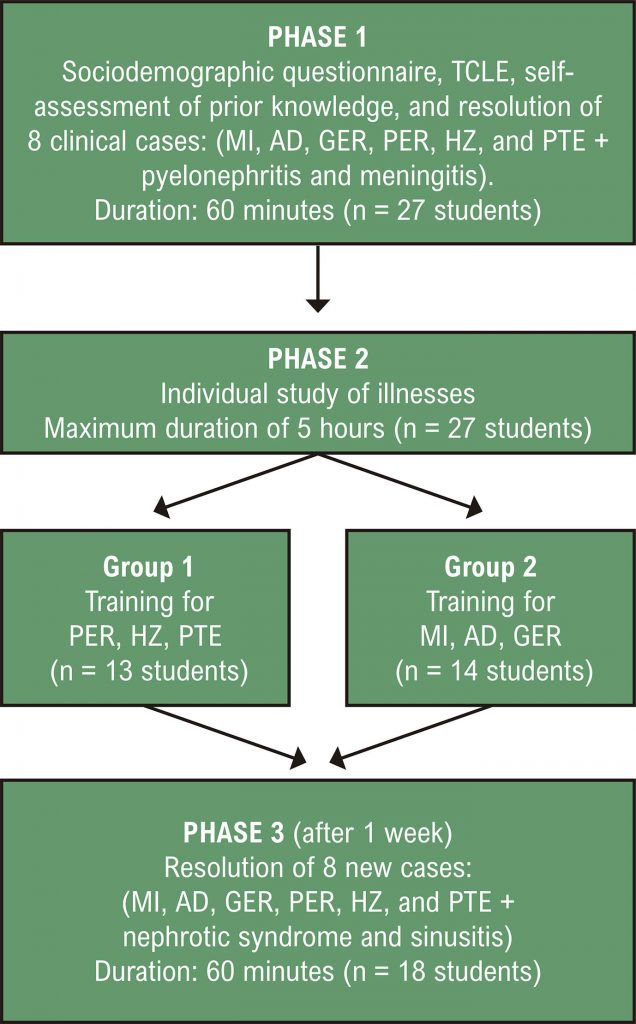Arq. Bras. Cardiol. 2022; 119(5 suppl 1): 14-21
Teaching of Clinical Reasoning Guided by Illness Script Theory
Abstract
Background
Teaching of clinical reasoning (CR) can be facilitated by educational strategies guided by illness script theory.
Objective
To evaluate the effects of an educational strategy guided by illness script theory on the diagnostic accuracy of chest pain in medical students.
Methods
Experimental study in 3 phases, with 18 third-year medical students completing phase 3. Phases 1 and 2 had 27 students. In phase 1, each participant solved 8 clinical cases (6 of chest pain and 2 distractors). In phase 2, participants were divided into 2 groups, which distinctly trained 3 of the chest pain diagnoses from phase 1. In phase 3, after 1 week, each participant solved 8 new cases, with the same diagnoses as phase 1. Case resolution time and diagnostic accuracy were evaluated. The significance level adopted for statistical analysis was p < 0.05.
Results
In phase 3, both groups showed improved diagnostic accuracy and reduced case resolution time for the trained diagnoses, with no transfer of learning. For these diagnoses, the diagnostic accuracy scores in phases 1 and 3 were: group 1 = 1.00, IQR [0.00 to 1.00] versus 2.00, IQR [2.00 to 2.50], p = 0.017 and group 2 = 1.00, IQR [0.66 to 1.17] versus 3.00, IQR [1.33 to 3.00], p = 0.006. Case resolution times in seconds were: group 1: 485, IQR [450 to 583] versus 318, IQR [284 to 418], p = 0.027 and group 2: 655, IQR [543 to 740] versus 408, IQR [337 to 569], p = 0.010.
Conclusion
The proposed strategy seems to contribute to improved diagnostic accuracy, and it may be considered for teaching CR.
737

